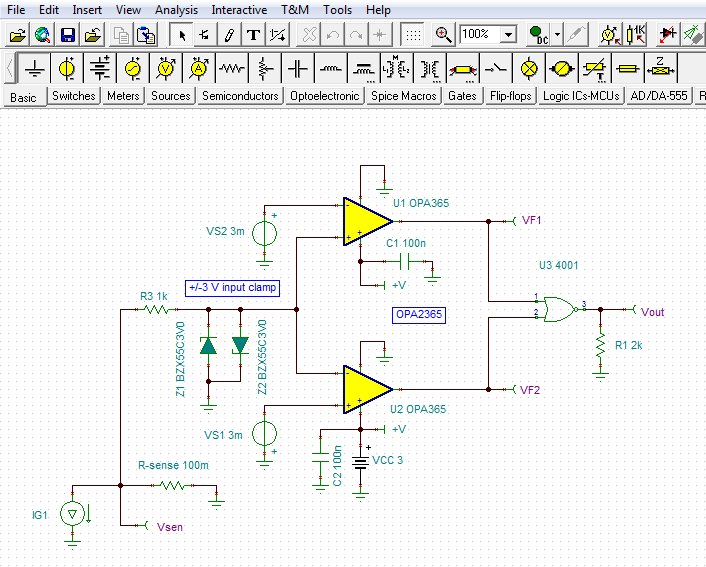Hi
I am a bit overwhelmed with the number of comparators on the market. I therefore hope someone can point me to the right device....
Here is the signal I have:
A power amplifier delivers the +/- 18V pulse width coded signal to the load (232µs=0, 116µs=1). After the end of a packet the amplifier does a shutdown for 450µs. In this time the load will send a 250kBaud message (the red part) by forcing a 35mA current (+ or -) on the line.
It is this current I Need to detect by a Windows comparator an send the result to an UART.
Now, what people normally do, they put a 1.5Ohm shunt resistor in the line and in parallel 2 antiparallel diodes. So they can detect the 35 mA and the high currents can pass through the diodes. But this does not allow to measure the currents 0..4 Amps to the load - which I need to do.
So I could put a 0.1Ohm shunt resistor on the line and use an ADC the measure the current to the load (regular current between 20mA and 3A, as well as overcurrent e.g. 5A). This would result in a acceptable voltage drop and allow for a 0.5W SMD resistor. So far so good. But the window comparator would only get a + or - 3.5mV signal.
hmmm....
By the way, the supply is 3.3V, taken from the +/- 18V signal and I Need to do this for 2 channels. So I selected a 2 channel UART with ‘enable’ and I2C interface as well as 2 channel ADC with I2C. The microcontroller will need to transmit the UART and current results via WLAN.
So what comparators could do the job????
Thanks in advance for any help..
Thomas







